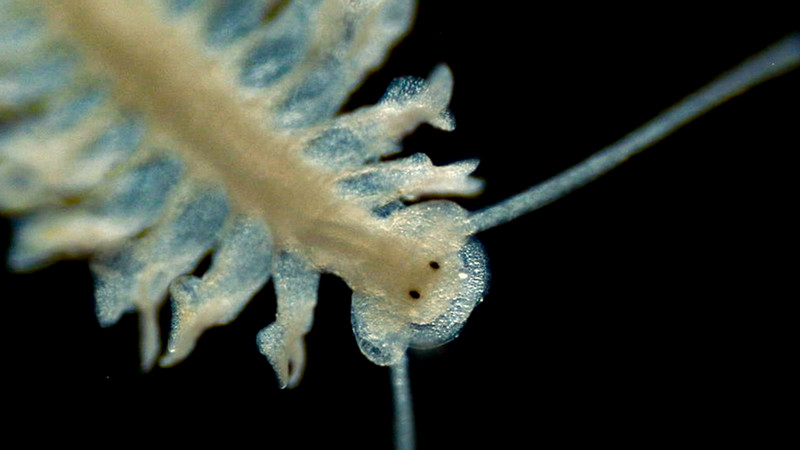This photo of a tiny worm is one to keep an eye on
Author: UNB Research
Posted on Sep 15, 2023
Category: Accolades , Faculty of Science , Publications , Research

Natasha Hynes is a graduate student at the University of New Brunswick (UNB), where she is completing her master of science in biology.
Hynes is also a finalist in this year’s NSERC Science Exposed contest, an annual contest organized by the Natural Sciences and Engineering Research Council (NSERC) and devoted exclusively to images of scientific research, in all fields of study.
It is intended to showcase research images and foster interest in science and scientific curiosity. Through the contest, NSERC is also working on building a database of scientific images in Canada and contributing to new uses for them and the advancement of knowledge.
We spoke with Hynes about her photo, her research, and what she wants people to know about the tiny aquatic animals that inhabit the ocean.
(P.S.: Voting closes this Sunday - make sure to vote for your favourites (especially Natasha's!) before then.)
Tell us about your photo.
This is a photo of an annelid (a marine worm) in the genus Tomopteris, one of two species in this genus we typically see in the Bay of Fundy. I think they’re one of the prettier-looking worm genera; their paddle-like arms are very beautiful when they’re swimming.
The individual I photographed here is only a couple of centimetres long. But even when they’re that small, they have two little eye spots that are very distinct – and captivating!
How do you capture a creature that small in a photo?
I used a Leica S9i dissecting microscope. This is what I use for most of my sorting when I’m processing a zooplankton sample. I’ll look at a water sample in a petri dish and identify all of the animals in it.
My microscope has a camera integrated on the top that I can connect directly to my computer to take a photo. But there is a lot that goes into getting the photo right before I hit that button! In addition to needing to pay close attention to both the overhead lighting and the backlighting, I spend a lot of time adjusting the focus. A minuscule change here makes all the difference in catching different details of the animal.
What do you hope people see or learn from your photo?
When most people think of the ocean, they think of sharks, whales, seals, fish, and other megafauna that are easy to see. But you can’t see plankton as easily (except for larger jelly species) and even though most people have heard the word “zooplankton” before, they don’t necessarily understand what that encompasses.
What I hope this photo (and all my photos!) can do is give us a closer look at the animals we call “zooplankton.” I hope it sparks an interest in this microscopic world that is a foundational part of marine ecosystems.
I thought this cute little worm would grab people’s attention and hopefully get them thinking about zooplankton and explore the work that our lab does.
I have spent most of my career so far looking at these animals that are quite incredible, but as the saying goes, a picture is worth a thousand words. I can say as much as I want about how incredible zooplankton is, but a photo is really what is going to do them justice. To be able to show people the diversity of the animals in single drop of water is very rewarding.
You mentioned sorting samples. What kind of research do you do?
I’ve been working in the Davies Lab since 2020 as lab technician. I trained as a taxonomist, which is biologist who specializes in examining, sorting and classifying organisms. Because of that, while I’ve worked on a lot of projects, one of my larger ones was processing biological samples, first for a graduate student, and now that I’ve started my own master’s degree, for myself.
In my research, I use samples collected from different water depths at research stations in the Bay of Fundy to get an idea of the abundance and taxonomic composition of the zooplankton community in the area.
We’re using these samples to ground truth a new instrument in our lab: the shadowgraph camera.
(Ed. - “Ground truthing” is the process by which researchers verify or validate interpreted results from a device by comparing them against empirical results, or data we know to be true.)
Why is this camera important? What does it enable?
When the shadowgraph camera is mounted on an autonomous glider, as the platform flies through the water column, the camera will take photos of the animals that pass through its imaging tunnel. Based on these images, we can identify the animals in the photos and determine the concentration of zooplankton in the water column.
The reason for focusing on a glider-mounted camera is that shipboard sampling is costly and restricted in time and space. Gliders, on the other hand, can cover much larger areas across longer periods of time, providing more comprehensive sampling than we can aboard a ship.